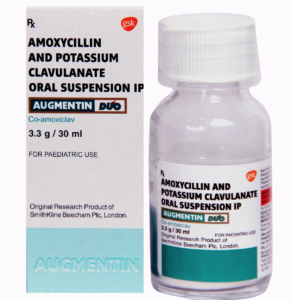My name is Camryn Sung and I am a rising junior who has been fortunate enough to join the Pollock lab this summer, where we focus on studying antibiotic resistance. My research centers around finding small molecule inhibitors of proteins that could serve as adjuvant compounds in the fight against antibiotic resistance.
Why should you care about antibiotic resistance?
Antibiotic resistance is a grave global health challenge of the 21st century. Bacteria continuously evolve and develop mechanisms to withstand the effects of antibiotics, rendering these drugs ineffective. While it may appear as a seemingly less pressing concern, these evolutionary adaptations carry significant risks to public health, leading to higher mortality rates and imposing substantial economic burdens.
Estimates from 2014 warned that without decisive action, deaths from antibiotic-resistant infections could surpass 10 million annually by 2050 (Berndsen et al., 2022). Unfortunately, the ongoing COVID-19 pandemic has likely accelerated the hypothesized timeline (Munita & Arias, 2016). Contributing factors such as prolonged hospital stays, extended ventilator use, and increased reliance on medical devices have played a role in the global rise of antibiotic-resistant infections. Furthermore, a recent report projects that antibiotic resistance could result in approximately 300 million premature deaths by 2050, accompanied by a staggering loss of up to $100 trillion to the global economy (Munita & Arias, 2016). These figures highlight the urgent need to address antibiotic resistance and recognize its profound consequences. By understanding the challenges posed by antibiotic resistance and the importance of adjuvants in countering it, we can work towards finding innovative solutions to preserve the effectiveness of antibiotics and protect public health.
Why are antibiotic adjuvants important?
 Amidst the challenges of developing new antibiotics, antibiotic adjuvants have emerged as promising tools in combating antibiotic resistance. Adjuvants are compounds that, when used in combination with antibiotics, enhance their activity without being toxic to bacteria on their own. One well-known adjuvant is clavulanic acid, commonly used with amoxicillin. The brand name is “Augmentin”. Clavulanic acid inhibits beta-lactamase, an enzyme produced by bacteria that can deactivate antibiotics like amoxicillin (Cutrona et. al., 2019). By blocking this enzyme, clavulanic acid restores the effectiveness of amoxicillin, making it a powerful weapon against bacterial infections. Maybe you were prescribed Augmentin for your last sinus infection?
Amidst the challenges of developing new antibiotics, antibiotic adjuvants have emerged as promising tools in combating antibiotic resistance. Adjuvants are compounds that, when used in combination with antibiotics, enhance their activity without being toxic to bacteria on their own. One well-known adjuvant is clavulanic acid, commonly used with amoxicillin. The brand name is “Augmentin”. Clavulanic acid inhibits beta-lactamase, an enzyme produced by bacteria that can deactivate antibiotics like amoxicillin (Cutrona et. al., 2019). By blocking this enzyme, clavulanic acid restores the effectiveness of amoxicillin, making it a powerful weapon against bacterial infections. Maybe you were prescribed Augmentin for your last sinus infection?
What can you do?
First, make sure to take your full antibiotic course as prescribed – that is important for trying to avoid the creation of antibiotic-resistant bacteria. Second, recognize that antibiotic resistance is a pressing global health crisis, requiring innovative approaches to combat superbugs. Third, take home message, adjuvants offer a promising strategy by enhancing the effectiveness of existing antibiotics. And lastly, encourage the government to fund more research into antibiotic adjuvant development. I’m funded on a grant from the National Institutes of Health this summer so I can speak first-hand to the fact that the money is going to a good cause!
References:
Berndsen, R., Cunningham, T., Kaelin, L., Callender, M., Boldog, W. D., Viering, B., King, A., Labban, N., Pollock, J. A., Miller, H. B., & Blackledge, M. S. (2022). Identification and Evaluation of Brominated Carbazoles as a Novel Antibiotic Adjuvant Scaffold in MRSA. ACS medicinal chemistry letters, 13(3), 483–491.
Cutrona, N., Gillard, K., Ulrich, R., Seemann, M., Miller, H. B., & Blackledge, M. S. (2019). From Antihistamine to Anti-infective: Loratadine Inhibition of Regulatory PASTA Kinases in Staphylococci Reduces Biofilm Formation and Potentiates β-Lactam Antibiotics and Vancomycin in Resistant Strains of Staphylococcus aureus. ACS infectious diseases, 5(8), 1397–1410. https://doi.org/10.1021/acsinfecdis.9b00096
Munita, J. M., & Arias, C. A. (2016). Mechanisms of Antibiotic Resistance. Microbiology spectrum, 4(2), 10.1128/microbiolspec.VMBF-0016-2015. https://doi.org/10.1128/microbiolspec.VMBF-0016-2015

Recent Comments